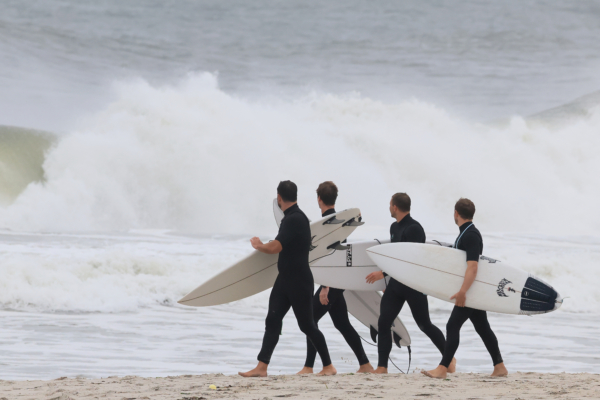On August 21, 2025, in the early morning, Hurricane Erin came closest to the United States mainland, bringing coastal flooding to parts of North Carolina and Virginia. Erin traveled along the east coast of the United States, passing from the coast of New Jersey to Long Island in New York, sweeping through the New York City area, and continuing its activity over the ocean, where the waves surged and rolled.
Before reaching the coast, Hurricane Erin was classified as a Category 2 hurricane with sustained winds approaching 100 miles per hour. As Erin moved further outward, strong winds and huge waves hit Nantucket and Martha’s Vineyard, but the intensity gradually weakened.
Earlier on August 22 (Friday), the National Hurricane Center in Miami reported that Erin had weakened to a Category 1 hurricane, with maximum sustained winds of 90 miles per hour, reaching approximately 680 kilometers southwest of Halifax, Nova Scotia.
Despite being twice the size of an ordinary hurricane, Erin has managed to cross the Atlantic between the East Coast and several island nations, with limited destructive power.
On Thursday, August 21, swim bans were in place at New York City beaches, but over a dozen surfers were seen riding the waves at Rockaway Beach in the Queens borough. Scott Klossner, who lives nearby, told CNBC that the conditions were fantastic for experienced surfers.
“You wait all year for waves like this. It’s challenging, it’s hard to stay in one spot because the waves are very, very intense,” he said. “But this is what surfers want – a hurricane that comes but won’t destroy my house? I’m in.”
On the same day, surfers also flocked to Long Beach in New York to enjoy riding the tall waves caused by the hurricane.
Since forming nearly a week ago, Erin’s intensity has fluctuated, but its size remains unusually large, stretching over 600 miles.
Hurricanes like Erin, known as Cape Verde hurricanes, originate from islands near the west coast of Africa, cross thousands of miles of warm ocean waters, and are among the most dangerous hurricanes in North America.

